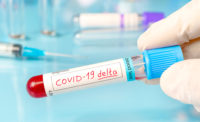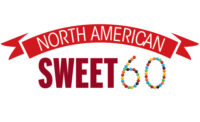Editor’s note: The following column was written by IRI experts Dan Sadler, principal, client insights; and Sally Lyons Wyatt, executive vice president and practice leader, client insights, IRI. Below, the pair offers insights into the current consumer mindset.
Consumer behaviors have shifted dramatically over the past two years, leaving brands and retailers to explore new strategies to meet the changing needs of shoppers.
The candy category has seen more than 13 percent growth since 2020 and sales are now outpacing food and beverage sales due to rising mobility, continued price increases and increased consumer indulgence.
Compared to pre-COVID-19, candy trends are slightly behind food and beverage and the CPG industry. Price increases will continue to drive increased sales throughout the year, but units may suffer declines. To help brands and retailers drive unit and volume growth, we’ve identified six growth levers that will unlock new opportunities and uncover which consumer habits were trends and which are here to stay.
1. Winning in an Inflationary Environment
Shifts in supply and demand continue to drive inflation and outpace wage growth, while rising costs have caused many to dip into savings for everyday expenses. And the price offered for promotions has led to higher prices across both chocolate and non-chocolate. Volume has remained relatively unaffected, which has led to a lessening of price elasticity. Promotional activity continues to decline and is not providing solid returns.
As the pendulum continues to swing before normalizing, manufacturers should pay careful attention to timing when executing price increases to continue driving profitable growth. When price forecasting, it is important to monitor demand and inventory levels closely, because promotion intensity will increase as more shoppers look for deals and promotion investment will become increasingly necessary. Focusing on targeting and communications also will be essential, as well as innovation and renovation to support higher prices.
2. Channel Opportunities
All channels have seen strong confectionery performance over the past year. When including e-commerce sales, total candy sales for 2020 were up by nearly 4%. This trend has continued, with online share now more than double what it was when COVID-19 began and e-commerce surpassing drugstore, making it the fourth largest candy channel. Continued engagement with online shoppers is paramount, and messaging and promotional strategies should be targeted to align with the values of high-priority online buyers.
As we begin to emerge from the pandemic, convenience shows strong quarter-over-quarter growth driven by several factors including increased mobility, lifting COVID-19 restrictions and transitioning to larger pack sizes. Within convenience, most candy is sold after 2 p.m., with peak time between 4 and 5 p.m. Brands and manufacturers should target opportunities to focus on sweet snacks, cater to indulgence and also provide morning treat ideas.
3. Rebounding Seasons
Seasons began to strengthen over the course of the last year across omnichannel, even surpassing pre-pandemic levels. While sales growth during seasons has increased due to higher price points, unit growth has been impacted by shoppers shifting to larger pack sizes over the past two years.
Brick-and-mortar stores remain the holiday destination of choice for most shoppers, but the opportunity to improve online share does exist. One way to increase this share is by regaining lost penetration across the holidays, representing a $100 million opportunity if penetration levels return to pre-pandemic levels.
4. Media Activation
Over the past two years, the CPG landscape has become more complex and challenging to navigate. Driven by technology, the consumer path to purchase continues to evolve as consumers change how they plan, shop and consume. When it comes to media activation, the recipe for success is continuing to target, activate and optimize the highest performing tactics to improve performance.
Industry research has consistently found that media activated with purchase behavior-based audiences achieves stronger sales lift, which is also true in confections. To effectively support activation strategy across channels, brands and retailers should define key business objectives before building and designing audiences. Strategies may include driving trips and spending, stealing share within the category, increasing the size of the category and delivering personalization. There also is an opportunity to customize activations within audiences based on known buying behaviors to reach each brand’s highest opportunity households that are driving brand sales.
5. Connecting with Consumer Segments
Understanding consumer preferences can provide powerful insights for targeted communications and leveraging purchase-based audiences to target these consumers is a great strategy.
Today, retailers and manufacturers may consider segmenting consumers based on their attitudes and purchase behaviors as they relate to the economy. We also find pockets of growth in confections that offer added benefits, especially with healthy and sustainability-conscious consumers. Households with children continue to be important, driving 15 percent candy dollar sales growth over the past year.
Other vital segments include millennials, who drove growth across all income levels, and low-income, young consumers, who drove one-third of candy growth over the past two years. While low-income households traditionally spend a higher basket percentage on candy, the gap narrowed as inflation started to rise. To retain these consumers, brands and retailers can offer tiered pricing, single pack sizes at a lower price point and implement purchase-based communications. They can also lean into value channels and ensure a good variety of offerings in those stores.
6. Harnessing Innovation
Innovation will be essential going forward, especially as higher price points drive consumers to seek actual value in their purchases. One area ripe for innovation is zero sugar and no sugar added products, as many consumers continue to search for better-for-you options. This category is now worth over $104 million and is up 132% in dollar sales over the past year.
Other opportunities for innovation include offering new line extensions, unique benefits and new and exciting flavors. Licensing also provides an excellent opportunity to expand the reach and growth of a brand, which can result in more trips, a larger share of the basket and increased household reach.
Growth can be found in 2022 and beyond, but it will be important for retailers and manufacturers to continue monitoring consumers and be able to act with agility to the fast-changing trends.




